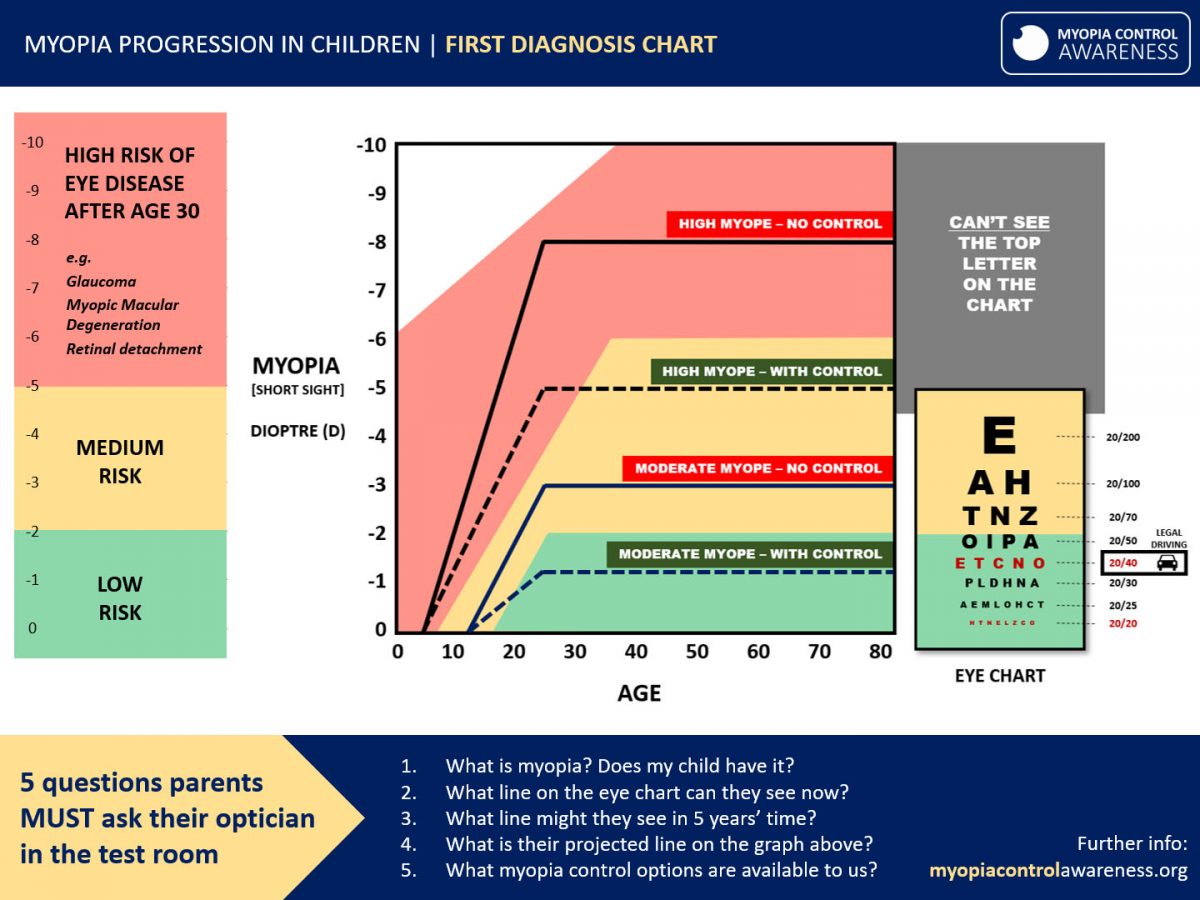Myopia Control
Myopia, commonly known as “Nearsightedness,” is a condition that, unbeknownst to many, increases the risk of sight-threatening conditions such as retinal detachments and diseases like glaucoma and myopic macular degeneration. These conditions should be taken seriously, as the higher the Myopia, the greater the risk of developing such diseases.
Myopia causes the eye to grow longer, making the retina more susceptible to degeneration. If we liken the eye to a camera, the retina is like the film, capturing what we see. Damaging the retina can lead to sight loss that cannot be corrected with spectacles or surgery. In the worst-case scenario, it may result in partial sight or blindness.
The good news is that the amount of Myopia can now be reduced in children. The chart below illustrates how EARLY CONTROL can help your child achieve better vision throughout their lifetime, lowering their risk of eye disease later in life.
TRAFFIC LIGHTS & YOUR CHILD (on the chart above)
RED – High myopia. Vital to get early control
AMBER – Moderate myopia. Green zone possible
GREEN – This is where we’re aiming for
AN ‘EYE TEST’ ASSESSES THE HEALTH OF THE EYE
Eye tests are not simply a “test for glasses.” They play a crucial role in assessing eye health. Considering that our children are expected to live until they are 90+, it’s essential to prioritize the longevity of their eyes! The RED ZONE indicates poorer eye health – as they age, they might find it challenging to see the top line of the chart without correction, may face difficulties driving, and will have a higher risk of eye disease. Taking proactive measures now to keep them in the GREEN or the AMBER zone will greatly benefit them later in life. Every Dioptre matters. Addressing low myopia now translates to better vision in the future.
MYOPIA CONTROL | STARTING EARLY VS STARTING LATE
Starting Night Lenses early (age 9) was the best thing I ever did for my sons
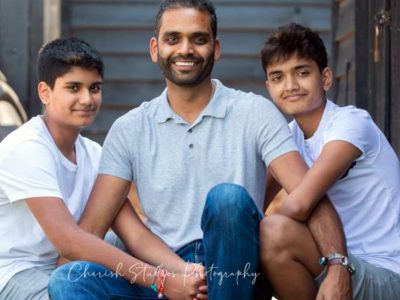
As a dad, making the decision to start early and help my boys see well while reducing their risk of eye disease later in life was the best thing I ever did. As a clinician, myopia control in youngsters is, without a doubt, one of the most rewarding aspects of my work.”
JAIMIN PATEL, OPTOMETRIST (& DAD)
I’m gutted we didn’t start earlier (we started aged 13)
Tom’s son (being taught to surf by Tom below) was in the RED ZONE but control with night lenses from the aged of 13 means he is is now stablised and heading into the AMBER ZONE. He will never reach the GREEN ZONE. No early intervention means he has a 40% greater chance of eye disease (Glaucoma and Myopic Macular Degeneration) later on in life than Jaimin’s son above.
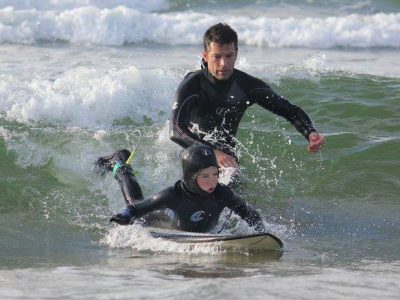

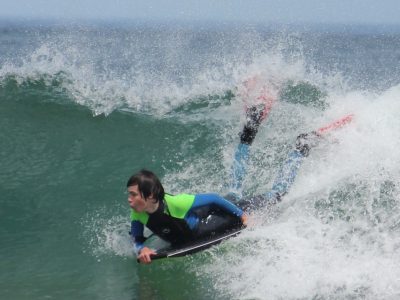
“Benjamin is short sighted”
This is what the optician said. My wife and I didn’t think much of it. Short sight is harmless, right? Benjamin was 8 years old. From ages 9 to 13, his vision plummeted to -3.75 & -4.00. Whenever his glasses fell off, he couldn’t see a thing. As an avid surfer, he lost sight of the waves. He stopped playing sports and his confidence took a hit. It broke our hearts.
We later learned that ‘Short sight’ was just a colloquial term for the medical condition ‘myopia,’ and we were shocked to discover that the worse his myopia got, the higher his risks of severe eye diseases later in life! Why hadn’t anyone told us this before?
At 14, he was fitted with a myopia control device. Now, at 16, he’s stable and transitioning from RED to AMBER (upper dotted line). He’s back to being a happy and confident surfer – the transformation has been incredible!
I deeply regret not starting earlier to give him better vision and a better life. Jaimin’s son (mentioned above) had a similar experience to Benjamin. He started at age 9, while Benjamin began at 14, five years later. As they age, Jaimin’s son will likely be able to see the 4th or 5th line down on the chart unassisted, almost meeting the legal driving limit, and will have a low risk of eye disease. On the other hand, Benjamin will only see the top line and will have a moderate risk of eye disease. That’s the long-term impact of starting 5 years too late.
Thankfully, we did start myopia control, or else he wouldn’t be able to see the chart at all when he’s older, would probably need laser eye surgery, and would have a very high risk of eye disease.
I wish this advice had been available earlier. My message to parents reading this – take myopia control seriously and start early!
TOM GRIFFITHS, DAD
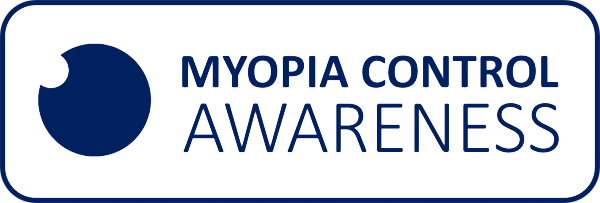
If you want to learn more about Myopia in children, Myopia Progression, and Myopia Control, visit myopiacontrolawareness.org. It’s a non-commercial industry collaboration site designed to ensure parents ask their optician the right questions and receive accurate answers, empowering them to help their children have the best sight and a better life

